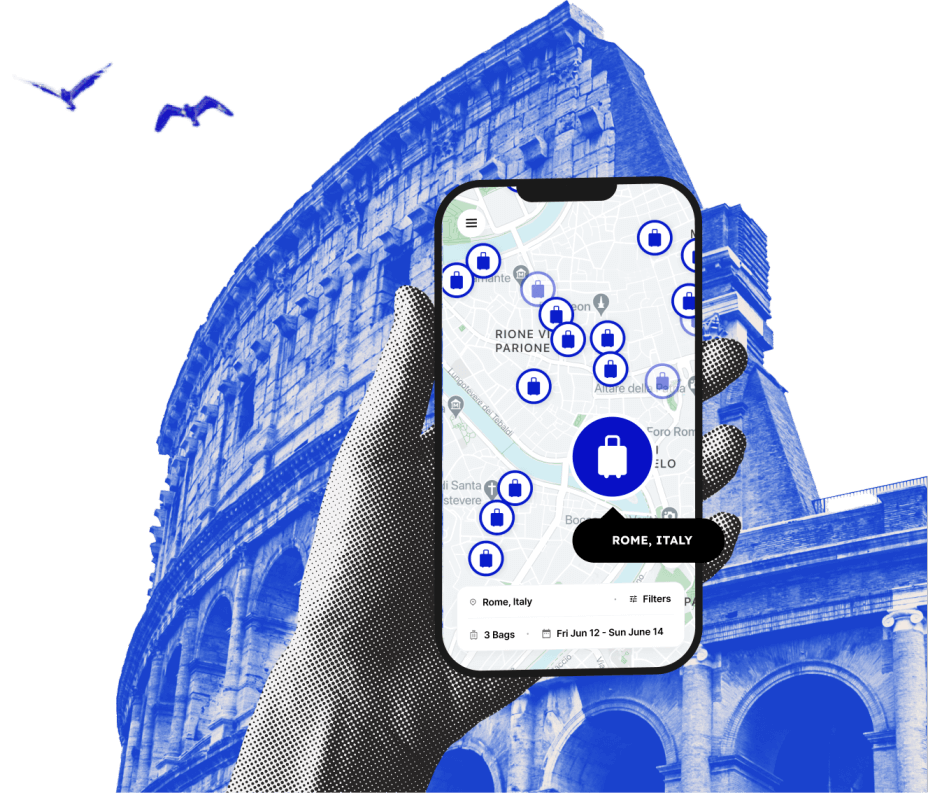How To Get Around Madrid
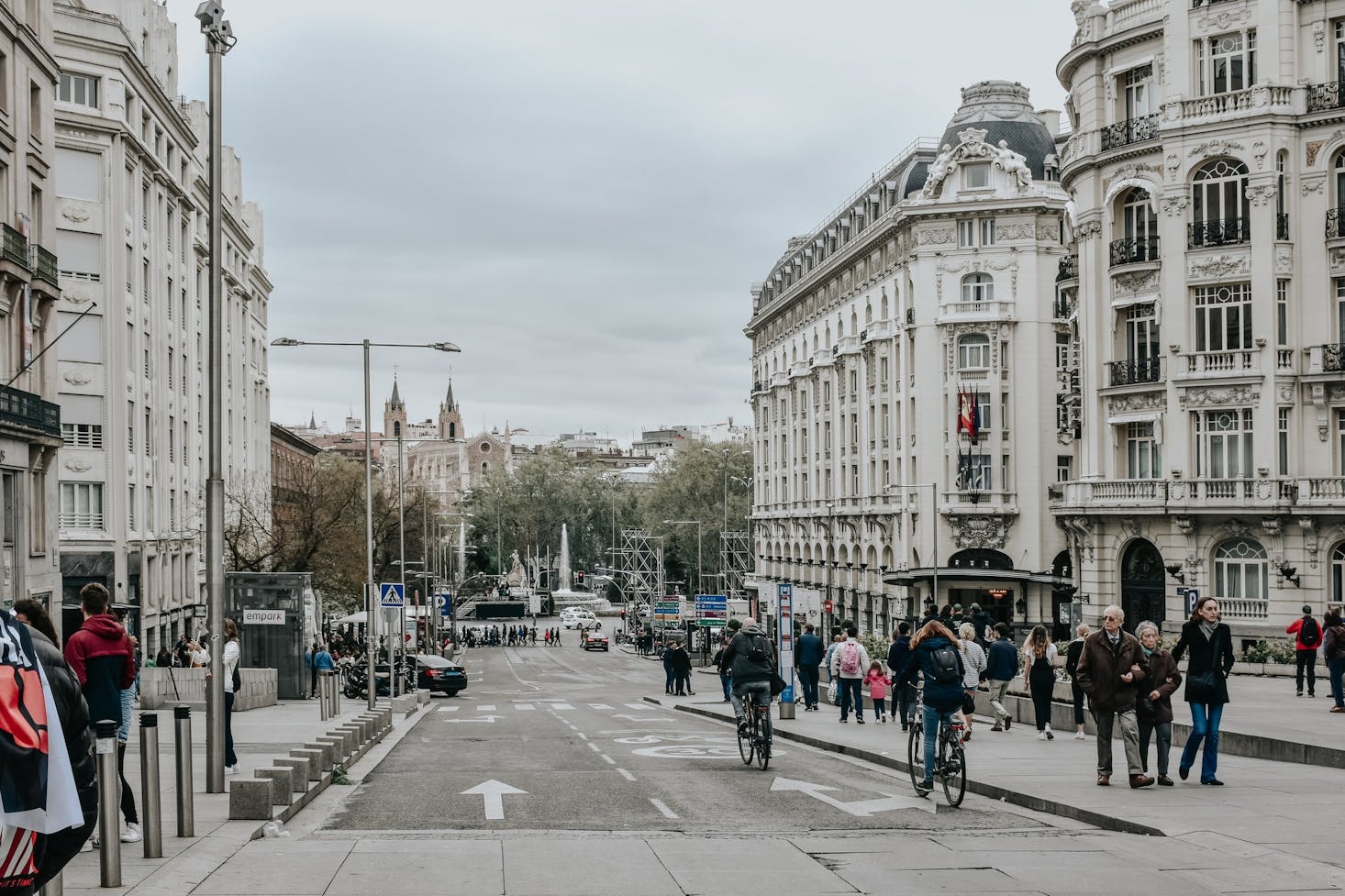
Madrid is Spain's capital city as well as a prosperous art and financial center. This city has attracted citizens from all over Spain and tourists from around the world, making it a dense but beautiful place to take a vacation. It is also one of the most elevated cities in all of Europe, sitting at 2,120 feet above sea level. Because of its location, Madrid often experiences cold weather during the winter with hot and dry summers.
While you are taking a walk through the city streets you will notice that each quarter has a unique geography and style, and is a mix of buildings from different periods of time of development. Although the town can appear a bit cramped, it is full of charming neighborhoods with some great historic places to stop by.
In terms of tourism, this city is a great place to visit and has lots of entertainment options. With gorgeous public parks, fascinating museums, impressive art galleries and amazing markets, shopping opportunities and options for eating out, Madrid can offer you an experience like nothing you have seen before.
As with most other places, Madrid faces problems like pollution and road congestion which can make getting around a bit of a challenge. If you are worried about how to make your way around the area you can follow this guide for a rundown of all the trains, buses, walking opportunities and other ways to get where you need to go. But before you go out to explore the town, make sure your bags are safe at a luggage storage Madrid location.

Love discounts and traveling?
Sign up for our newsletter and get 10% off your next booking.
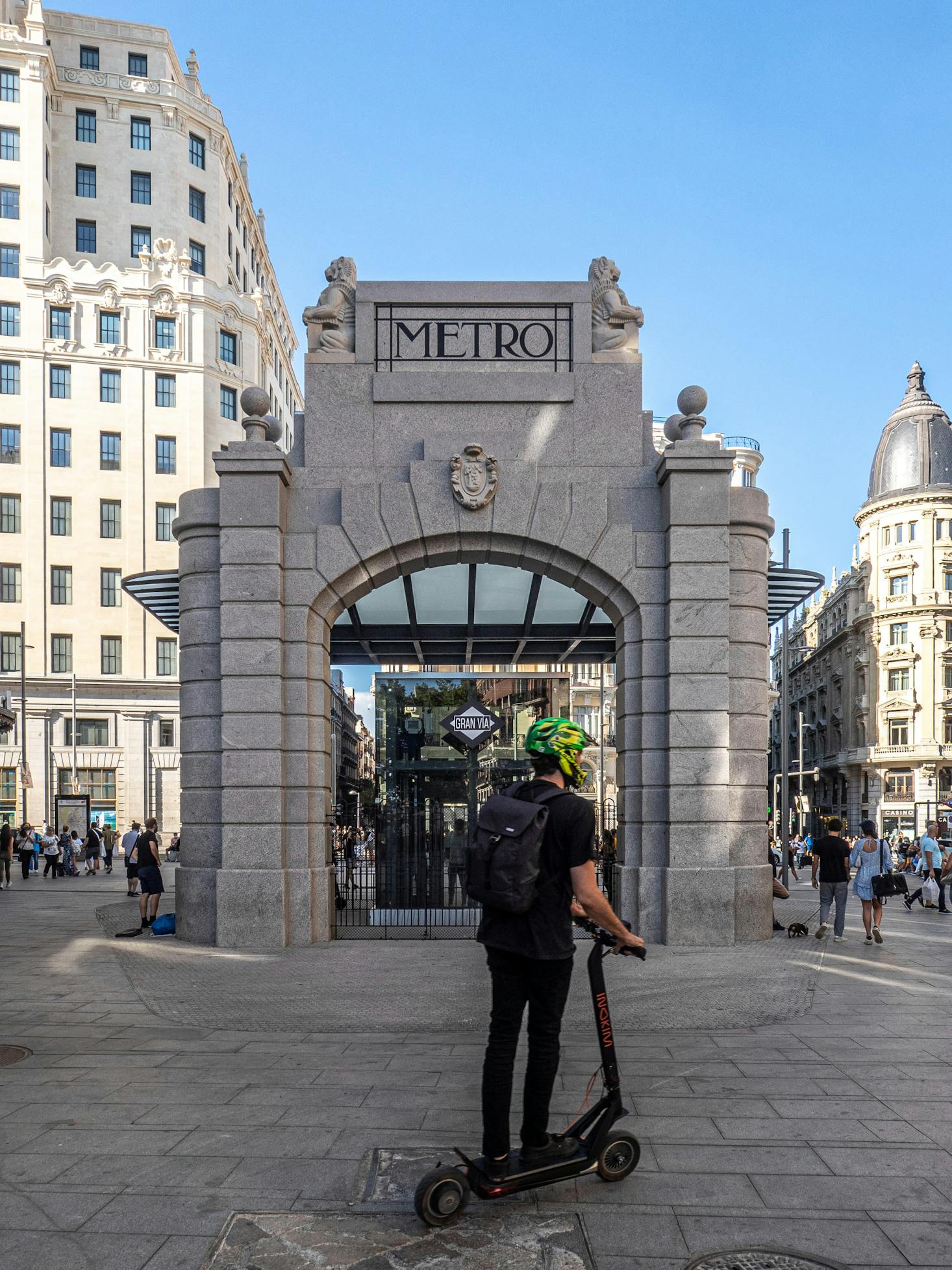
How to get around Madrid by train
Madrid has an impressive metro system that was inaugurated back in 1919 and is definitely the fastest option for traveling within the city. It is actually one of the biggest subways in all of Europe with its 12 underground and color-coded railway lines, 3 tram lines and more than 300 stations spread out around the area. They run for most of the day from 6 am to 1:30 am which makes them a great option for getting back to your hotel if you stay out late.
The Madrid metro operates quickly and efficiently since the trains pass by on average every 2 minutes during rush hours, and after midnight you catch a ride every 15 minutes. There are metro stations connecting landmarks throughout the whole city, and even the Adolfo-Suarez Madrid Barajas Airport has its own metro station right underneath it which is connected to the central hub of Nuevos Ministerios. There are different costs for tickets depending on the zone that you are traveling to but the cheapest one that you can pay is under 2 euros, which is about $2.30.
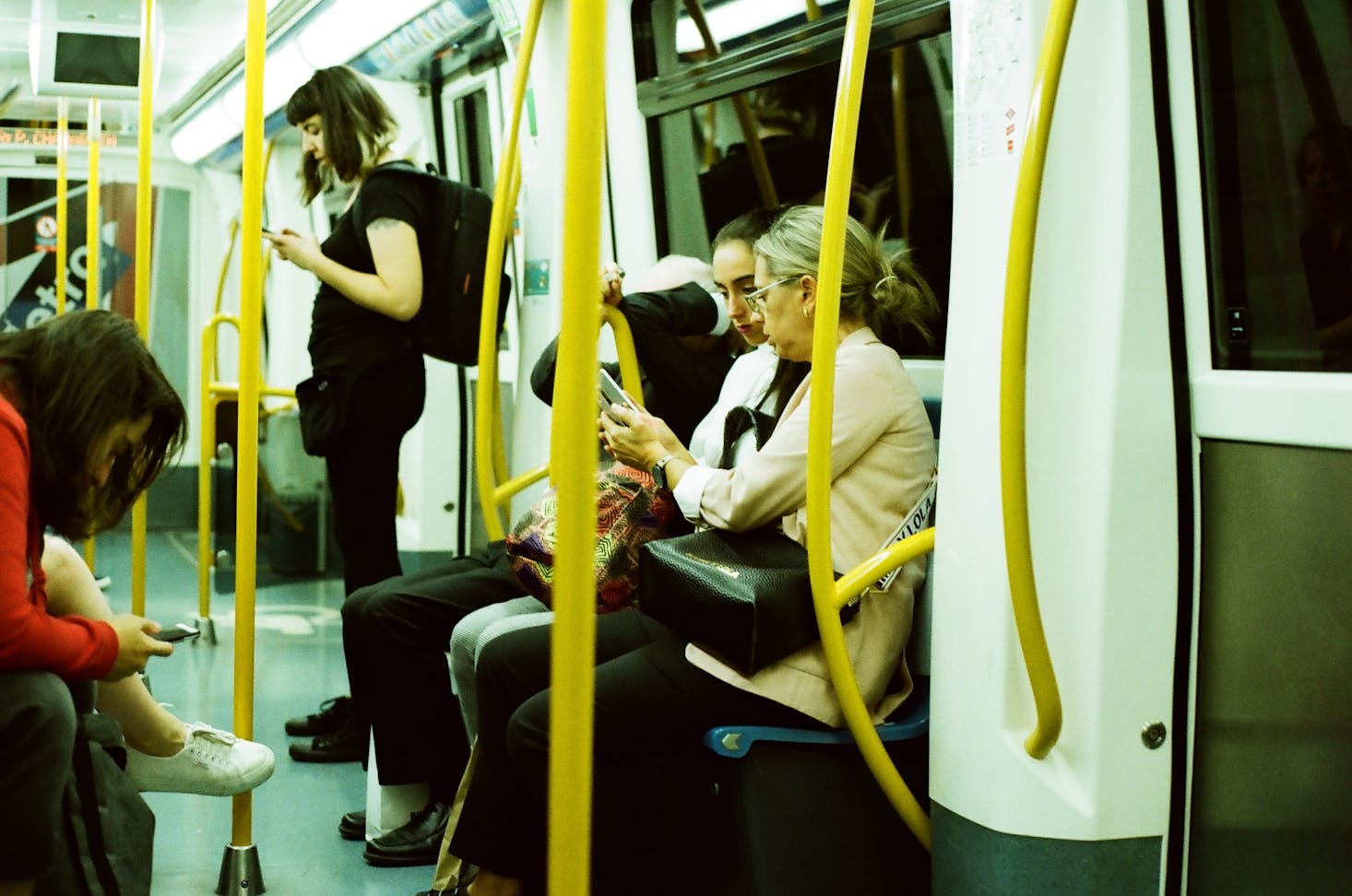
Commuter Train
Aside from the underground railway, the city has a commuter train system called the Cercanias Renfe. The train stations can get you to some of the most picturesque places in the city as well as the many landmarks and World Heritage Sites. If you are already on the metro you can make your way to the Cercanis Renfe from Line 1 at the Atocha station. The above-ground train system is smaller than the metro but still has 9 stations strategically placed around Madrid. The earliest trains start at 5 am or 6 am depending on the day, and the last trips stop at around midnight.
The great part about Madrid's public transportation is that some tickets can be used for both the metro and the train, meaning you won't have to buy a new pass when you change from one to the other. However, if you are riding to one of the further stations you might have to buy new passes to accommodate for the long distance travel. Almost all of the metro stations in the city offer accessibility options for those with disabilities, such as ramps and lifts for wheelchairs, braille writing on the handrails and signs as well as reinforced edges on the stairways.

How to get around Madrid by bus
Getting around Madrid by bus can be a great opportunity for you to see different places while you travel. It is much nicer than moving around underground but the drawback is that it can be slower due to the traffic, bad weather and other variables. Buses do have their own dedicated lanes on most streets which does help them to be faster, but during rush hours there is not much you can do.
If you aren't in a rush taking the public buses around the city center is definitely worth it for the views of the town and architectural landmarks. Visitors can get to most of the main city attractions by bus and they are reasonably priced too. One way tickets for a bus will cost you about 1.50 euros or $1.75.
In total there are two different systems with bus stations around the inner or outer part of the city. First, there is the EMT Madrid service that has 200 routes to explore. These buses run between 6 am and 11:30 pm as well as 27 night buses that run later in the night. They leave from the Plaza de Cibeles and are perfect for people who like to party or stay out late.
The town has recently been putting effort into becoming more environmentally friendly, leading to the implementation of three buses that have zero-carbon-emission. These buses are free too so you can take unlimited rides without paying anything. The EMT Bus service is accommodating for those who are visually and hearing impaired and offer reserved seating for baby carriages and wheelchairs. As well, the buses have low floors and tilts for easy access and Braille writing on the buttons.
If you are traveling in central Madrid, you will want to take the Interurban Bus. These buses are run by a different company and are privately owned. They are known as the Green Buses of Madrid and are another comfortable and reliable way to get around the city. Local bus station kiosks sell tickets for these buses in bulk or you can buy one way tickets from the driver directly. If you are planning to use these buses a lot you can save time and money by getting a 10 trip ticket pack from the kiosks.
If you want to see the city from a visitors point of view you can buy a tourist ticket for one of the sightseeing buses which let you hop on and off when you reach a new area. These tourist buses are offered by two main companies, either the Madrid City Tour or the Madrid Bus Vision. These buses are great for new tourists to learn about the city and even offer an audio system in your preferred language.
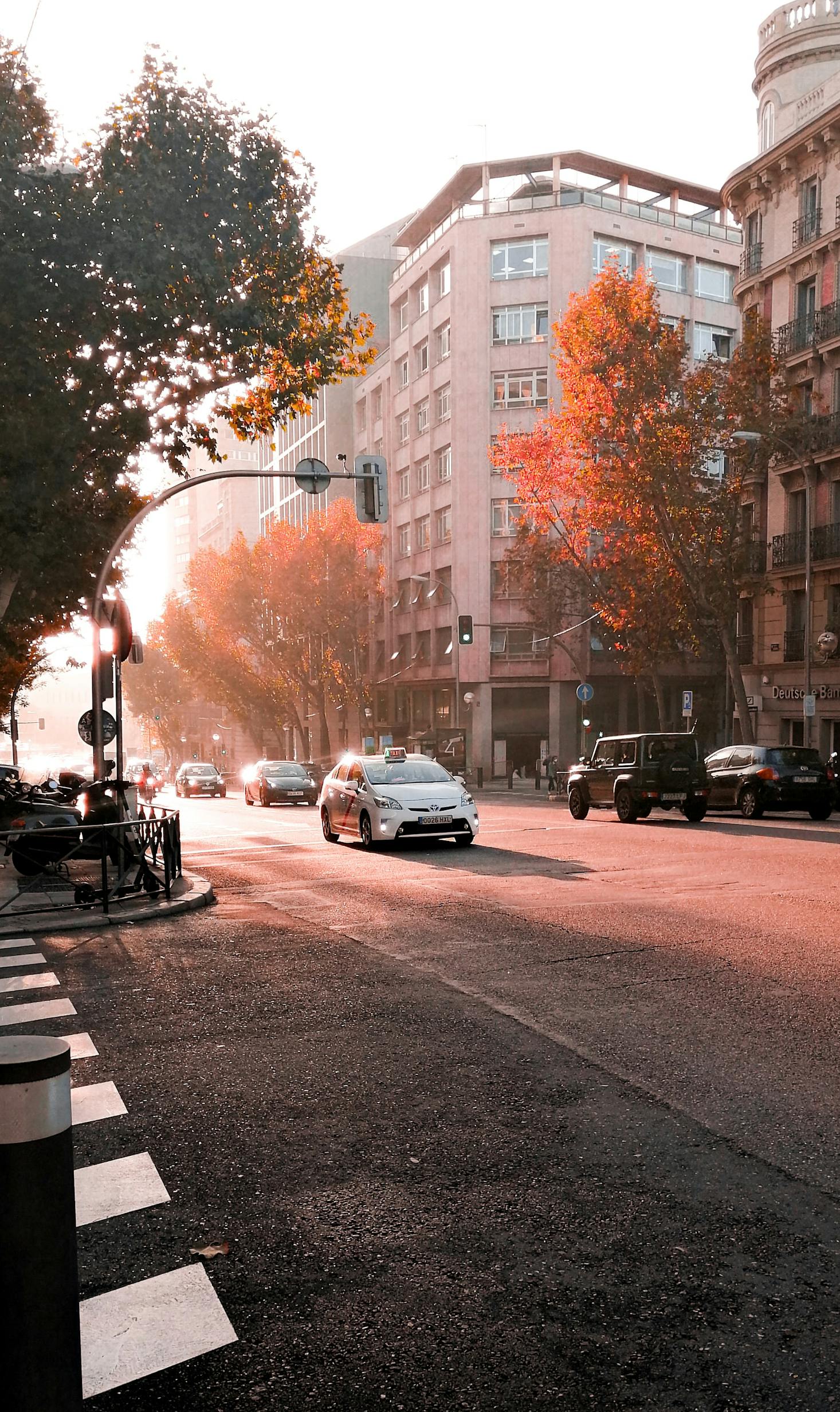
How to get around Madrid by car
A popular way for both locals and tourists to get around the city is by car share, which is a great idea for long distance traveling and better for the environment too. There are several sites that you can use to connect with locals, and one of the most popular is called BlaBla Car. You can use their website to catch a ride with someone going to the same place as you or even just in the same direction since it offers car share rides that stop at different locations around the city. You can even post your own car share rides in case you wanted some company or help paying for gas. Car sharing is generally a better option than driving on your own or taking a taxi, although they are offered around the city as well.
You can recognize the local taxis as the white cars with a red diagonal stripe and the emblem of the city on the side. You can hail a taxi that you see on the street or grab one from a queue in the busy parts of town. It is not uncommon that taxis charge extra for tourists if they can get away with it, so make sure that the meter is running once you get in the car.
If you want to drive yourself around and have an international driving permit you can rent your own car from one of the local agencies. Be aware that you will have to pay for parking in some places and will also have to deal with the usual annoyances like traffic and aggressive drivers. Madrid does have a motorway that can take you in and around the city, making car rentals a perfectly good option if you don't think the public transit will work for you and you don't mind paying for gas.

Can I get around Madrid by foot?
Tourists who don't feel like paying for public transport can choose to explore the city by foot. It can be hard to get from one spot to the next without using the bus, metro, train or car, but there is much to keep you busy in the central areas. In fact, walking around town can give you a whole new experience and allows you to see the city in a way that other transportation options would not. Madrid has an active street life, and being able to explore the city at your own pace can give you opportunities to stop at local markets or grab a bite on one of the terraces of a nearby café.
If you feel like being active but don't want to walk around town, you can try the new bicycle rental services offered in Madrid. Keep in mind that the bikes are a recent development, so there are not many bike lanes yet, and biking on the roads isn't always safe. However, with this new initiative, the city has been making improvements to make this option more feasible.
So far there are about 3,000 bikes stored at different facilities around the town, and since they are electric it is an environmentally friendly public transport option. You can take a bike from one of the 264 charging stations found throughout the city and then drop it off at a different one closer to your destination. To take a bike you will have to sign up for a day pass at one of the docking stations and you can use the BiciMAD app on your phone to find which station is closest to you. The passes last for either 1, 3 or 5 days at a time.
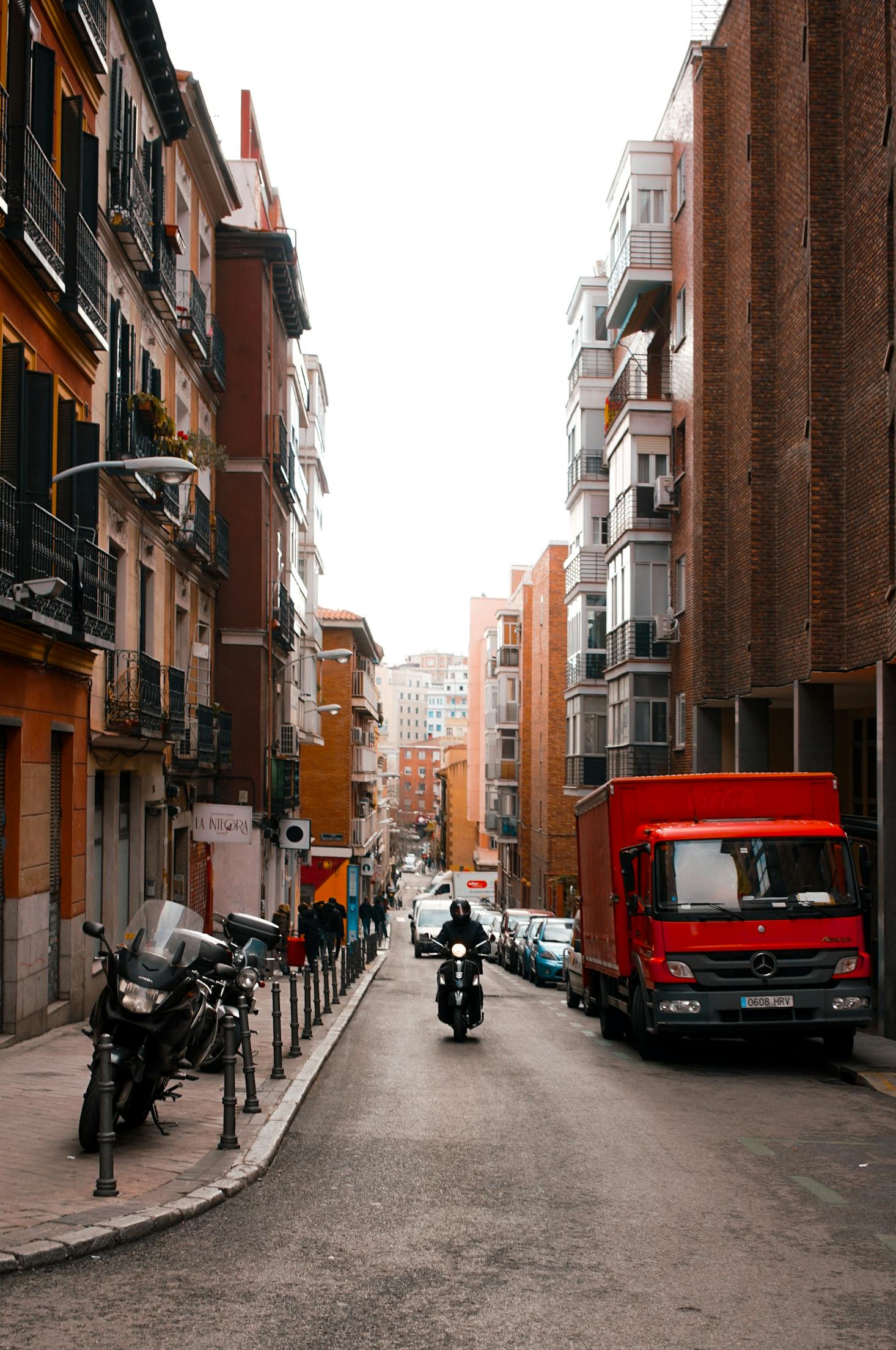
Making Your Way Through Madrid, Spain
Once you exit the front doors of the airport you will find different ways to travel around town, including an express bus that will take you straight to the city center. If you need to get somewhere specific you can ride in one of the signature taxis with a diagonal red stripe, or use the normal bus service to get to most places within the city limits. The metro lines are a good option for moving quickly and can get you to different neighborhoods or popular areas with ease, like football stadiums or the Plaza Mayor. Keep in mind that, as with most cities, the transit schedules can change on public holidays and weekends.
Tourists that are planning to explore all over the city should look into buying a Tourist Travel Pass. They can make your trip easier as they are universal between the metros, trains and buses of Madrid. Multi Cards can also be used to save time since you can put several bus tickets on the same reusable card. They are refillable and last for up to 10 years, so don't toss them away if you are planning to come back to Madrid. If you are someone traveling with disabilities you might benefit from the Accessible Tourism Guide released by the Spanish Representative Platform for the Physically Disabled and the Madrid Tourist Board.

Love discounts and traveling?
Sign up for our newsletter and get 10% off your next booking.
